1lumen selects and reviews products personally. We may earn affiliate commissions through our links, which help support our testing.
Maxtoch L2Kd review
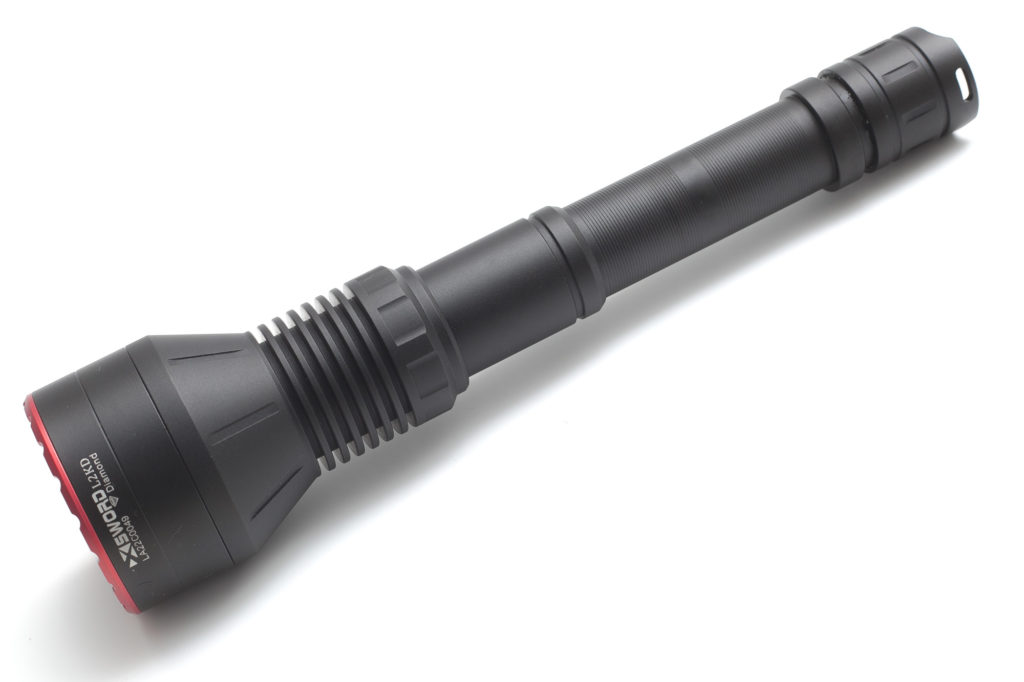
Maxtoch Xsword L2Kd specifications
| Brand/model | Maxtoch Xsword L2Kd |
|---|---|
| LEP | Mirror type LEP |
| Max. Lumens | 650 lm |
| Max. Beam intensity / distance | 3200 meters (2,560,000) |
| Battery config. | 2*21700 |
| Onboard charging | N/A |
| Modes | 3 |
| Blinkies | N/A |
| Reflector | N/A |
| Waterproof | IPX8 |
| Review date | June 2022 |
Introduction:
If you look at our list of best performing LEP flashlights, you’ll notice that Maxtoch is covering many spots. And that’s for a reason. Their main focus is on gear for hunters, and so, they also focus on long-range flashlights. And they have been making LEP flashlights for several years, probably since 2018, and were therefore one of the first manufacturers using an LEP module as their lightsource.
LEP stands for Laser Excited Phosphor, which has a laser at the base of the light source. A phosphor layer turns the blue laser into a white-looking beam, and an aspheric lens helps to concentrate the light into a far-reaching beam.
The L2Kd is an upgraded version of the L2K, and the D stands for Diamond. More on that later.
Package quality.
Maxtoch ships its lights in a simple brown carton box, with a specially designed carry bag for the flashlight. Inside this little bag, you can find the following. (BTW, I got one without the charger and batteries)
- The flashlight: Maxtoch Xsword L2Kd (in short: Maxtoch L2Kd)
- Holster
- Lanyard
- 2 spare o-rings
- 3 colored filters (red/yellow/green)
- Manual
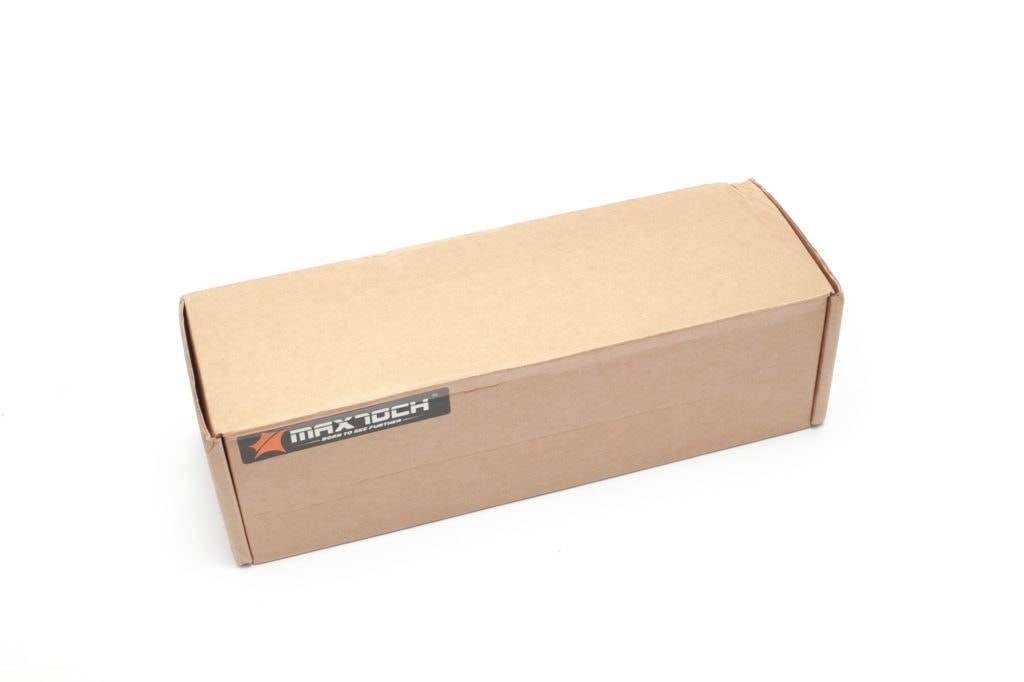
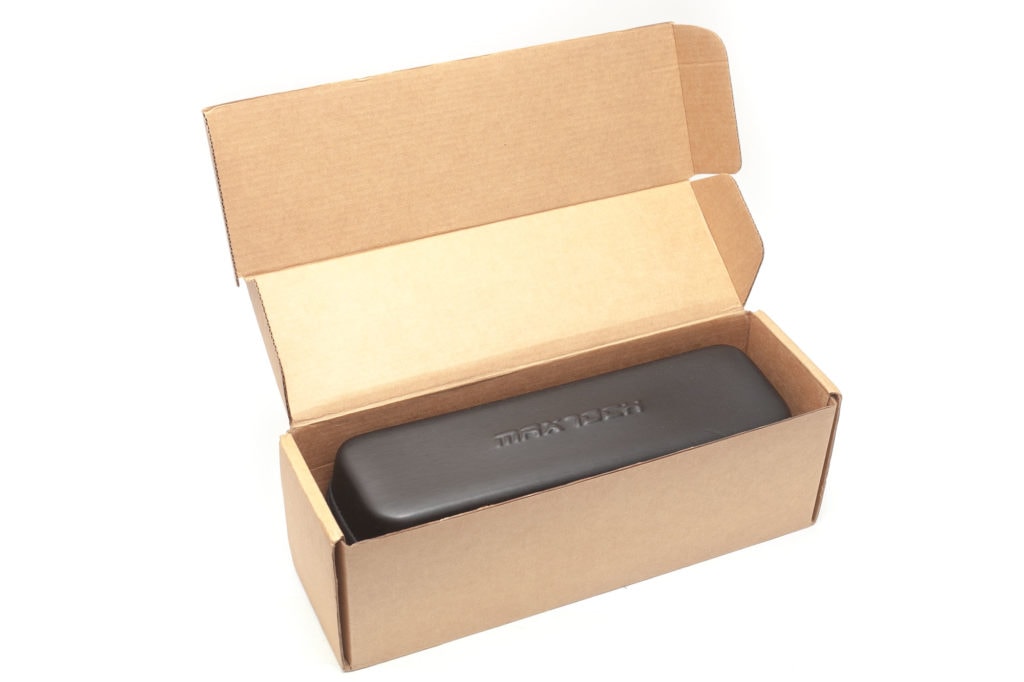
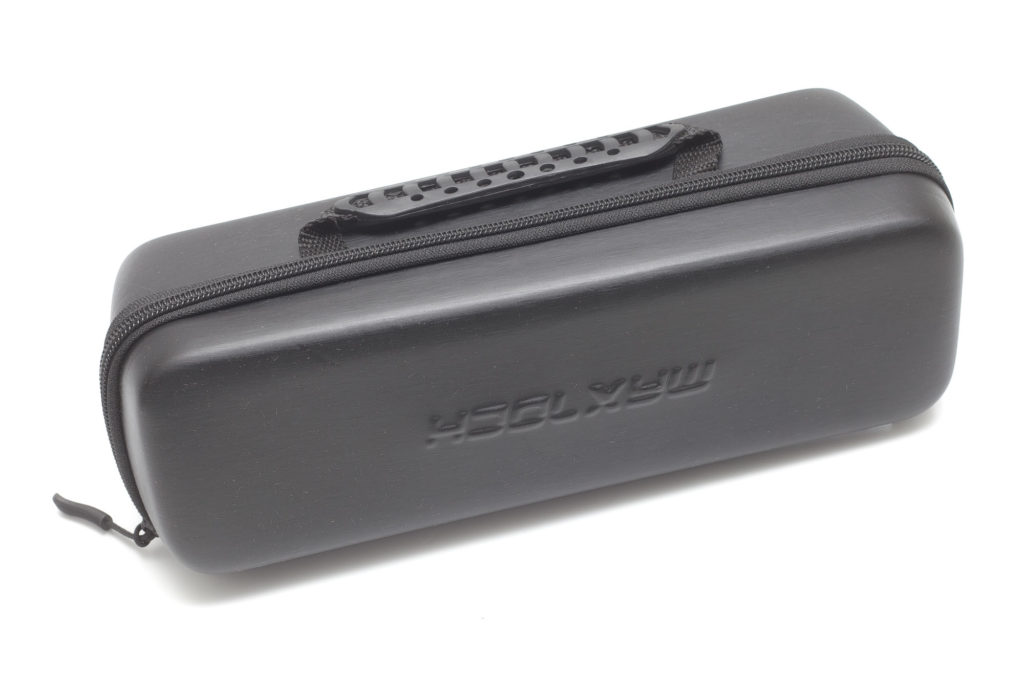
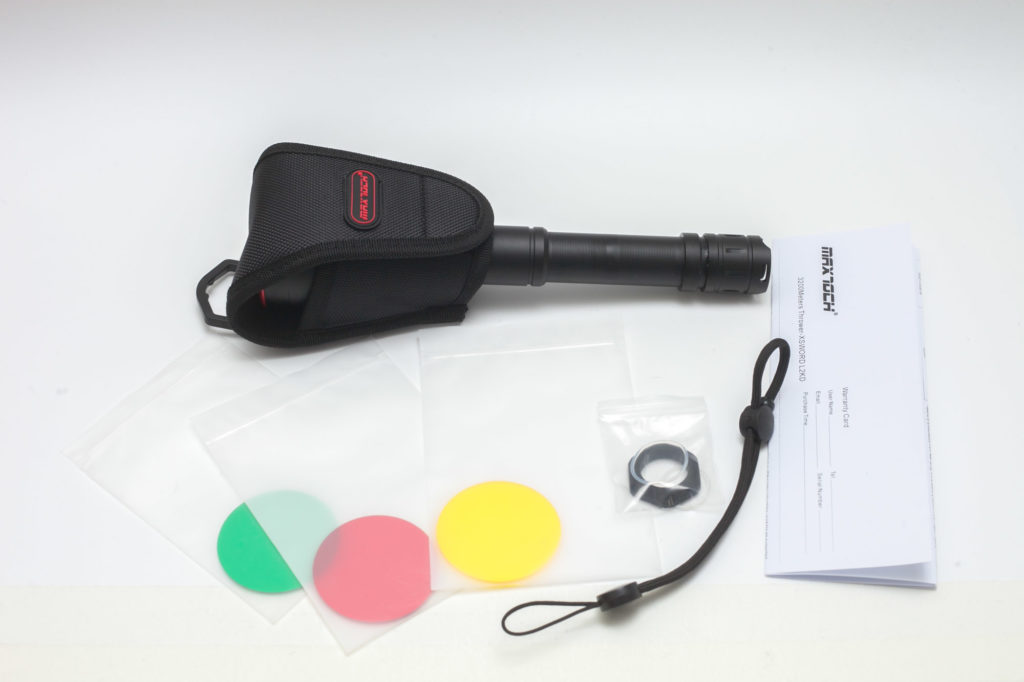
Flashlight in use
The L2Kd is long with only one switch at the tail cap, so you likely have to operate it with both hands. When you hold the flashlight overhand, you might have difficulty pressing the button with the flat part of your thumb. The only way to activate the switch is by pressing it with the tip of your finger/thumb.
If you’re a hunter, you can also get the optional remote switch, which would eliminate this problem.
The Maxtoch L2Kd is too long for a pocket clip, but the package includes a rubber tactical ring and a holster. Maxtoch also sells some optional gun mounts, so you won’t have to stick to 1 way of carrying or attaching it.
I have to say that the body is a little bit on the slippery side for everyday carry, but that’s not the purpose this light was built for. It’s a hunting light, so the slipperiness needs to be taken with a grain of salt. There is some redding around the body, but it’s nothing like the aggressive knurling found on some tactical flashlights.
My package included 3 colored filters:green, yellow and red. These are lenses you have to put between the bezel and the front glass. They don’t have a threaded bezel around the filter, as you see with some other brands. Replacing these filters in the dark can be tricky because of this, and they are easier to drop or get your greasy fingerprints on. I’m curious why they chose to do this.
Another thing I noticed is the watery grease? lubriation Maxtoch is using on these threads. When I unscrew the tailcap, there is some light grease (lube) on the switch retaining ring. It looks like they are using very thin lube, which becomes a bit too thin after using it. So I’d recommend to wipe it off and add your own lubrication.
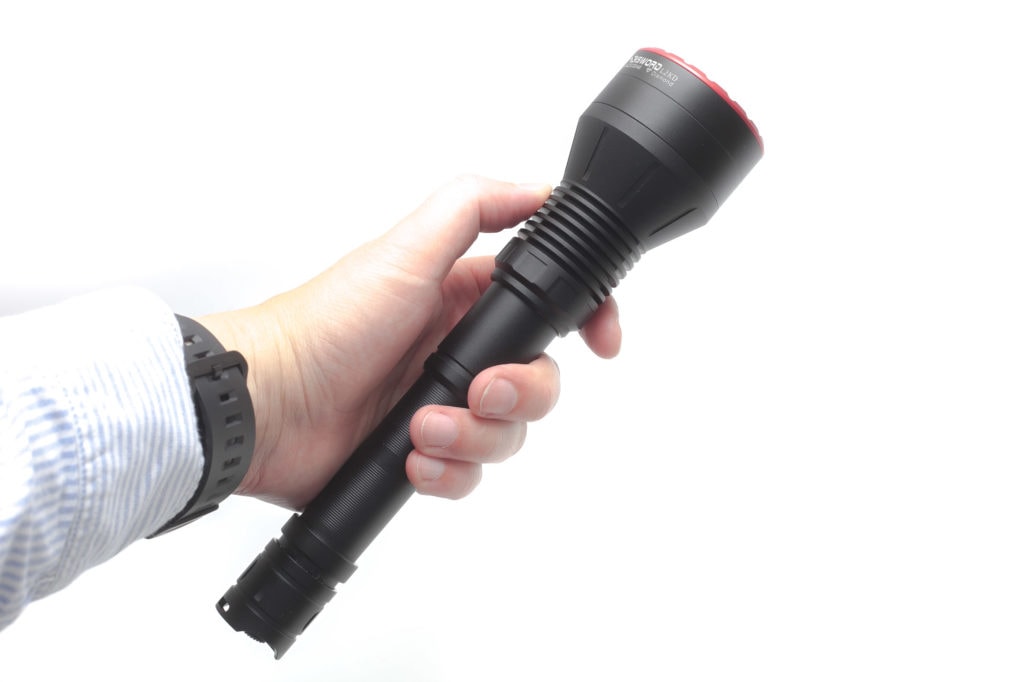

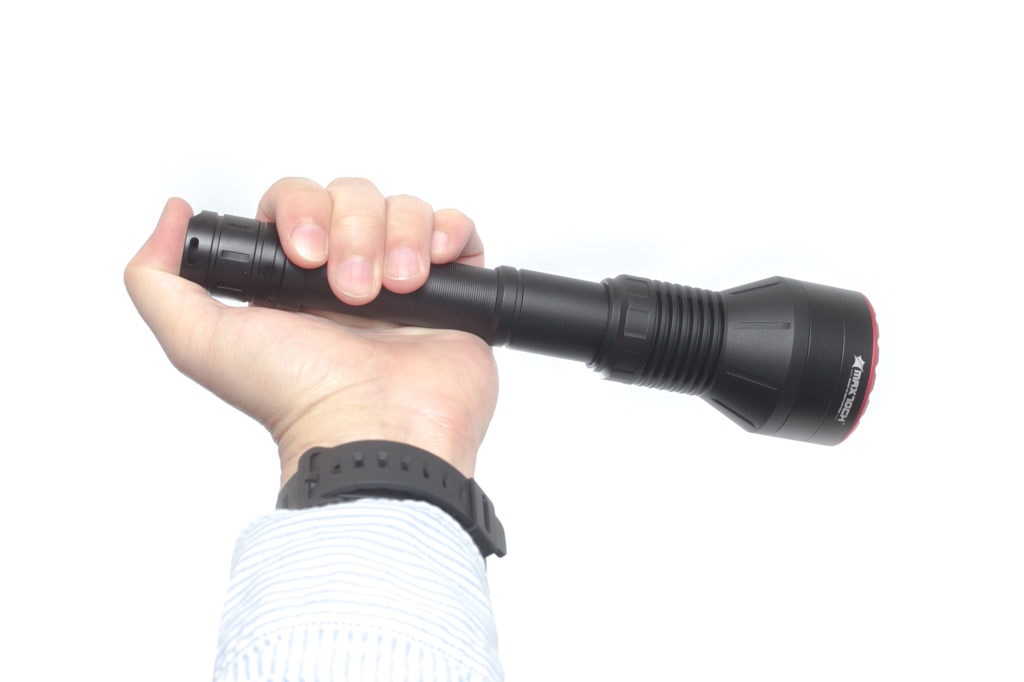
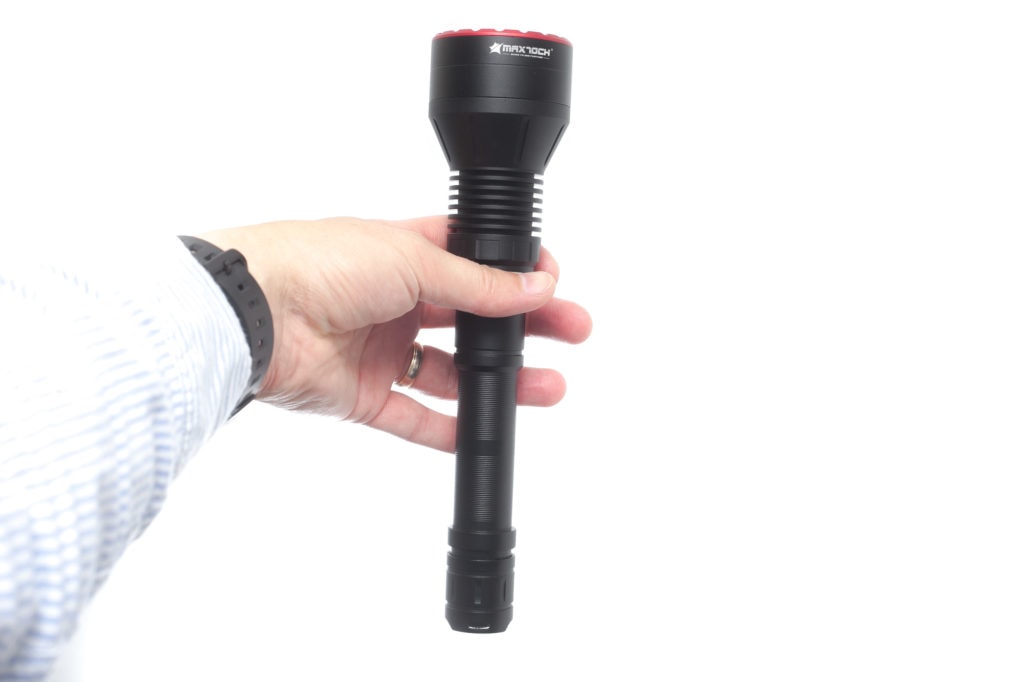
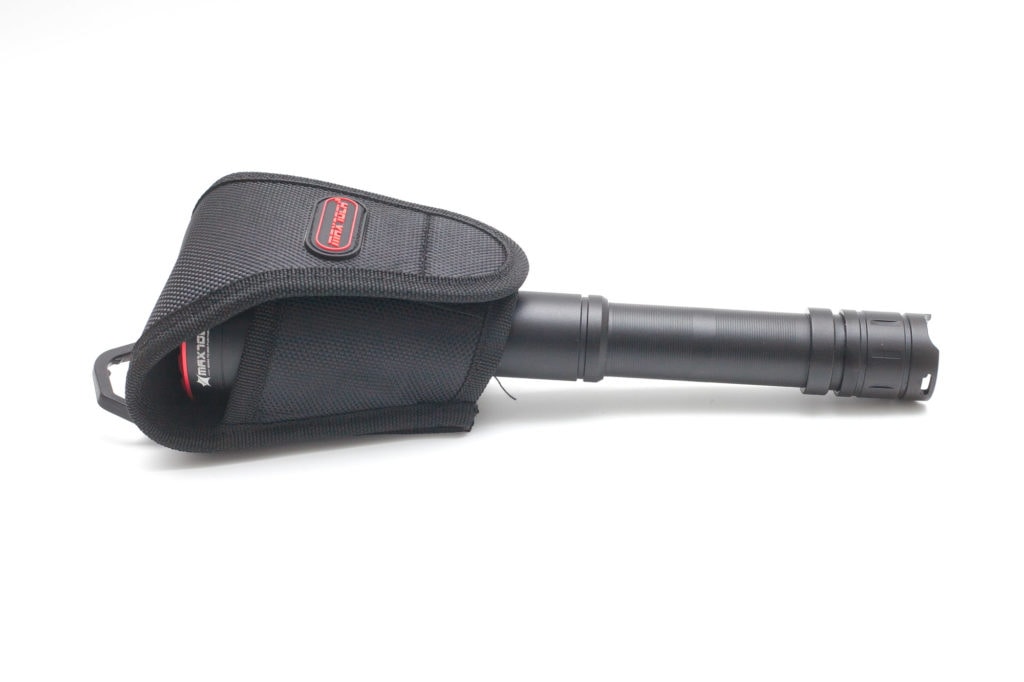
Build Quality, and Warranty
The build quality looks the same as the other Maxtoch flashlights we reviewed, including the L2K , L2Ks, L3K, Owleyes Pro, etc. This means there is some machining and design elements, but there hasn’t been put much thought into it. But again, this flashlight is likely getting beat up while hunting, so it doesn’t need to be designed extremely nice like your average EDC.
The anodization on the flashlight seems adequate, and the bezel is red, just like the other Maxtochs I have.
The bezel, tailcap, and battery tube can all be removed without too much trouble. The threads near the tailcap have 1 o-ring to keep the water out, while the original L2K had 2 o-rings.
Maxtoch warranty:
Maxtoch offers a 1-year warranty if the problem is caused by normal usage. But there is a lifetime warranty for repairs with no labor charges as long as parts are available. You will only be charged for the parts needed to repair the light. Accessories like lanyards, holsters, etc are not covered by this warranty. More info can be found here: https://maxtoch.com/pages/–14
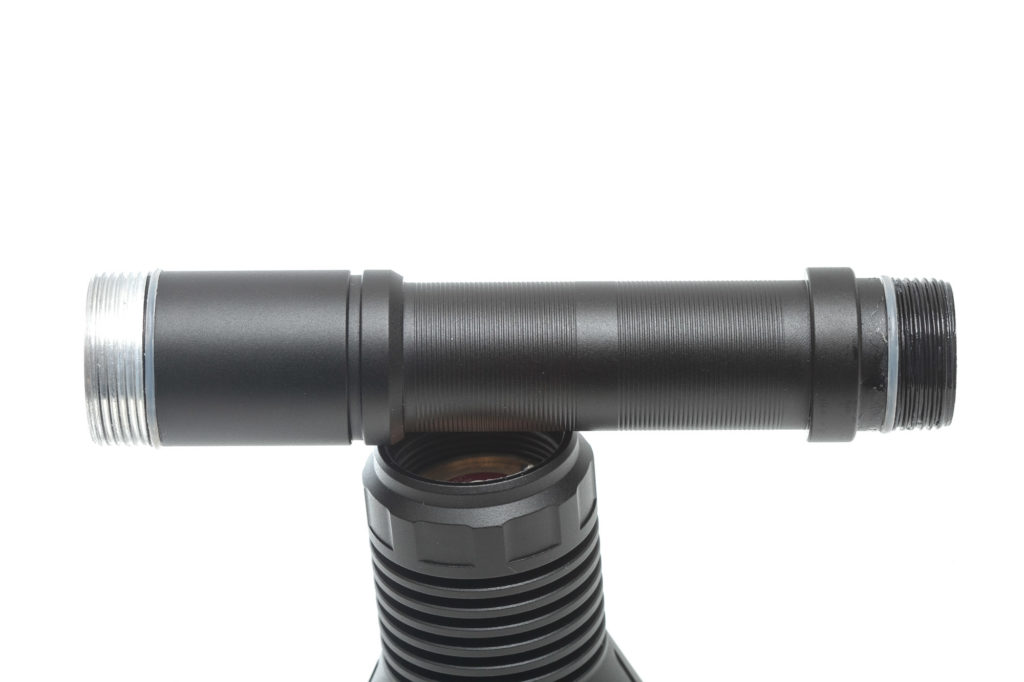
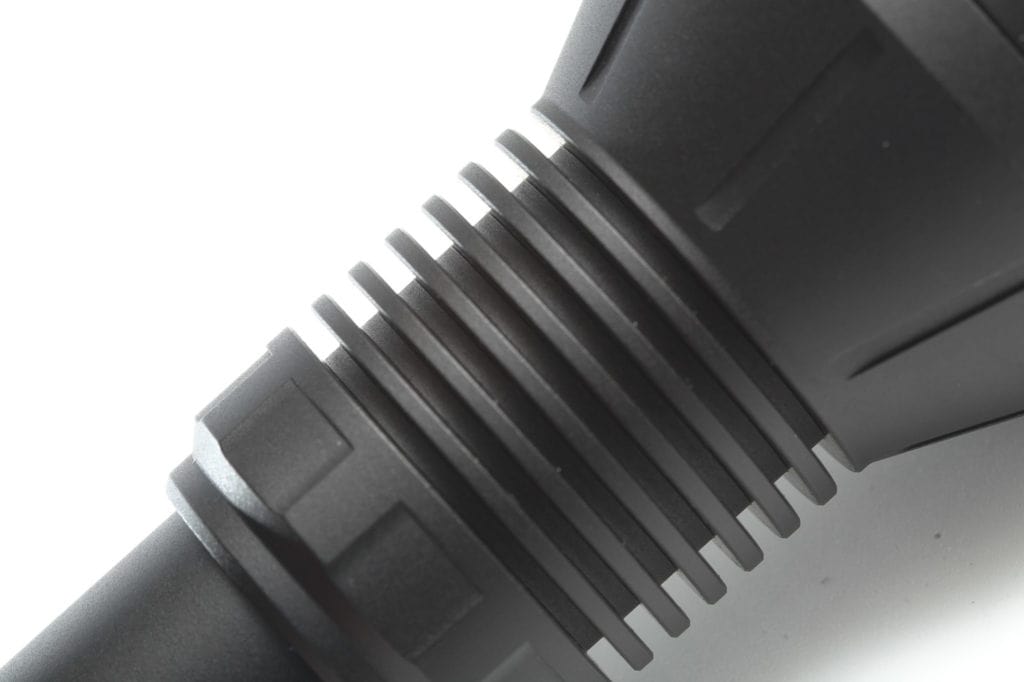
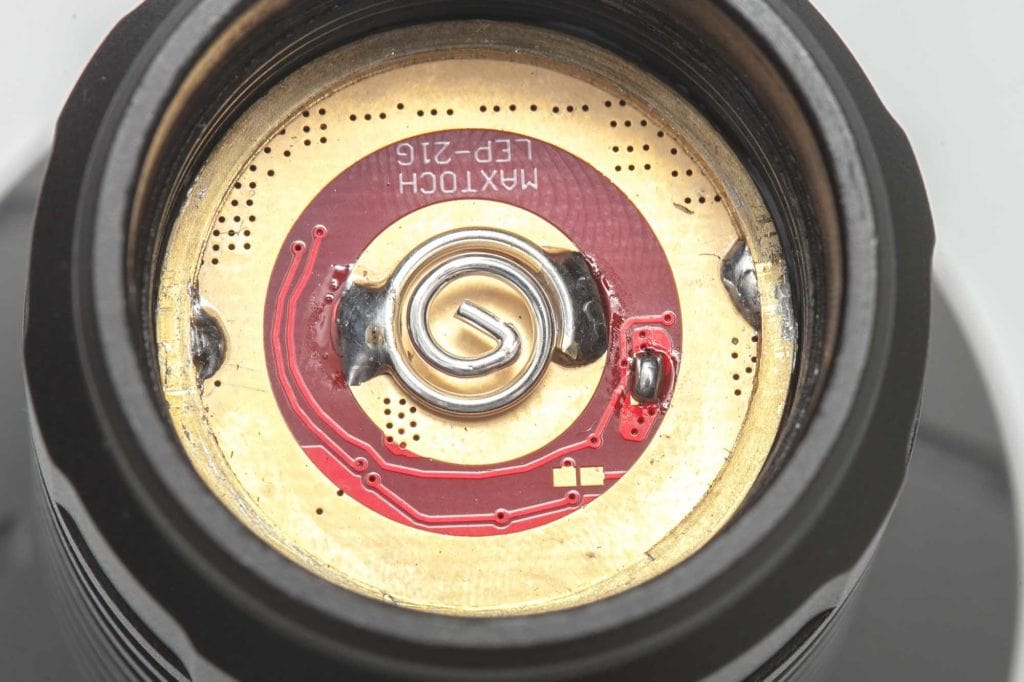
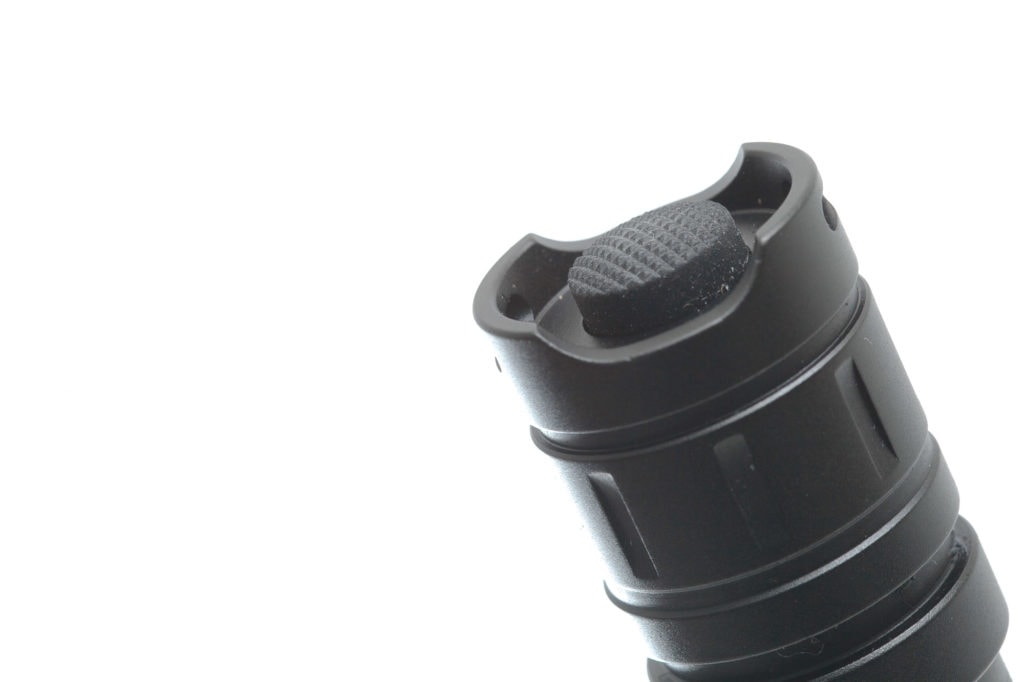
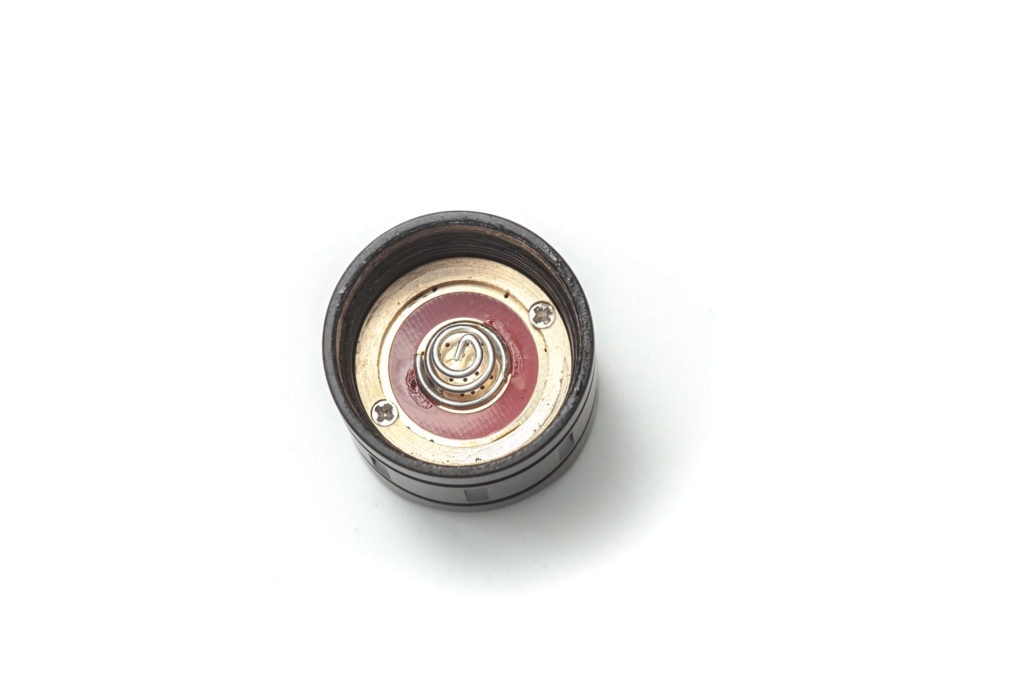
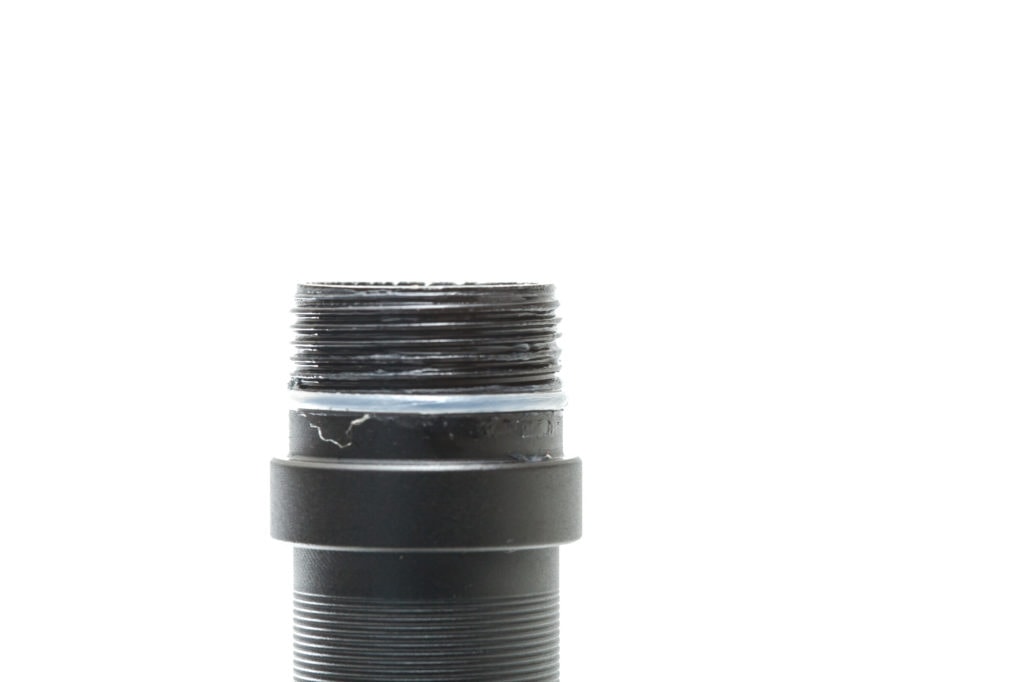
LEP, Lens, Bezel, Beam, and Reflector
From the outside, the L2Kd looks like your average long-range flashlight, but on the inside is not. Instead of using an LED on top of an MCPCB, the L2Kd uses an LEP module, that turns a blue laser beam into a white beam, using a layer of phosphor. In this process, you will be able to see some tint shifts throughout the beam, with possible blueish rings/tints, depending on the distance to the object you’re pointing the light at.
Objects close to you might show a blueish beam, while objects far away show a cleaner white or yellow beam color. This has to do with the mirror-type LEP module, focusing the laser onto the phosphor and then converging the beam with a convex lens.
If you have OCD for color shifts in beams or are just a tint snob, you better grab a cup of coffee and continue reading your newspaper. LEPs are not the best choice for you. Get a LED-based flashlight with your preferred beam color and be done with it.
If you compare it to the L2K, you wouldn’t notice too many differences. It’s a bit shorter, but the main difference is on the inside. At its base, you can find a new type LEP module, with phosphor made of diamond (Other sellers/manufacturers call this crystal).
All LEP flashlights use convex lenses to focus the beam. But not all of them have a normal lens in front of the convex lens. This means that your most important piece of glass (actually plastic) is damaged when you accidentally hit it at the front. But fortunately, the L2Kd has a protective lens placed in front of the convex lens.
It also has the typical red bezel, with a zigzag pattern, looking almost like teeth. Removing the bezel itself isn’t a problem because it doesn’t have any glue, and is supposed to be removed if you want to use the colored filters. These filters fit right behind the bezel, in front of the convex lens and glass lens.
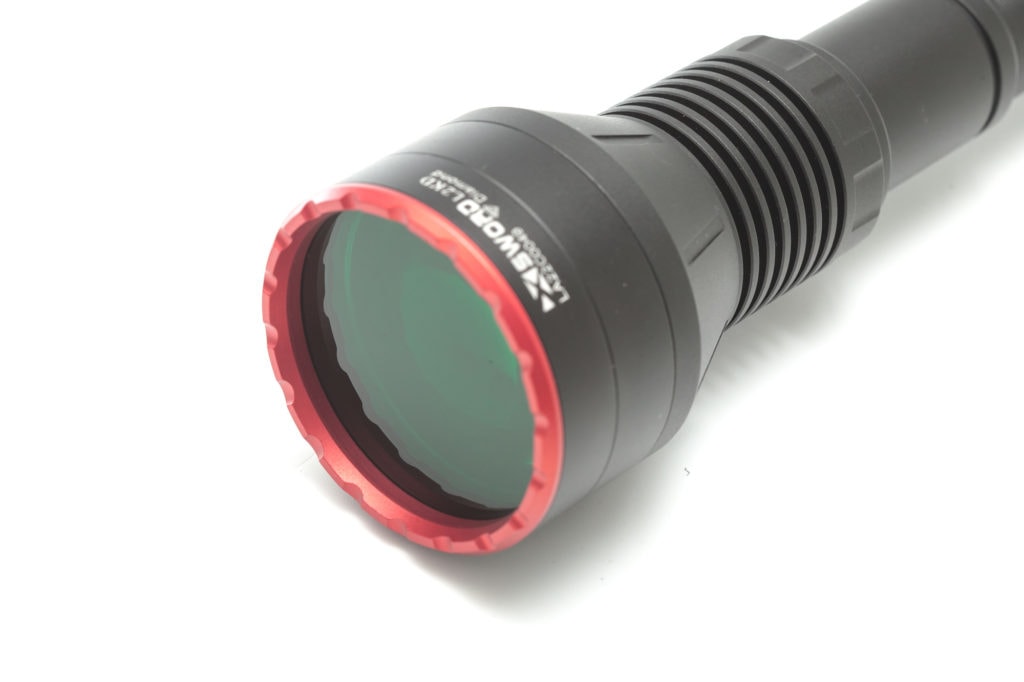
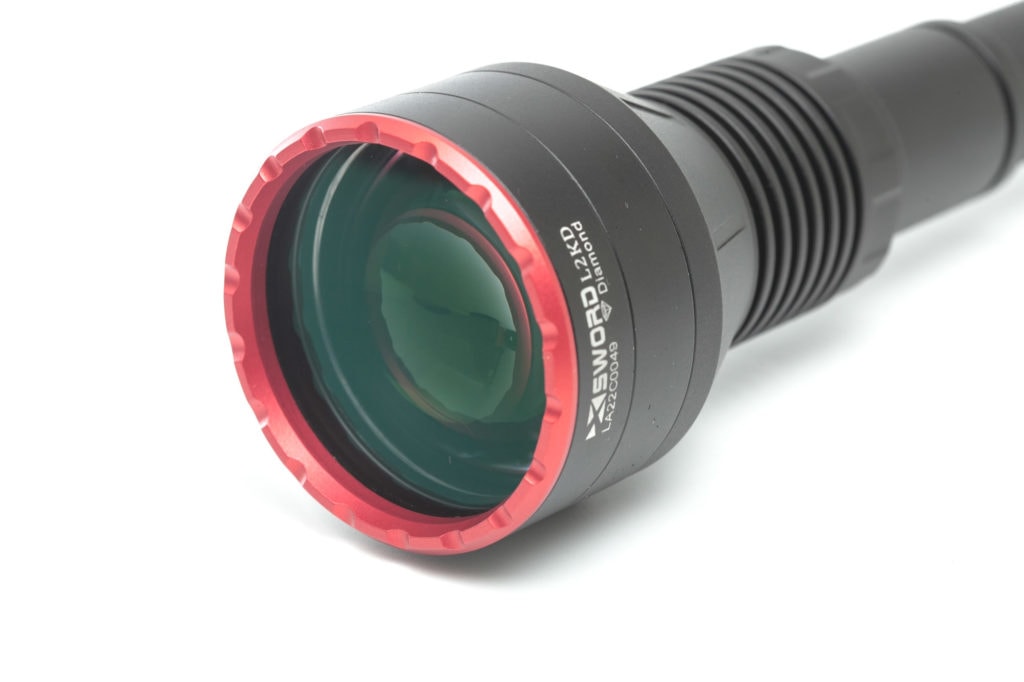
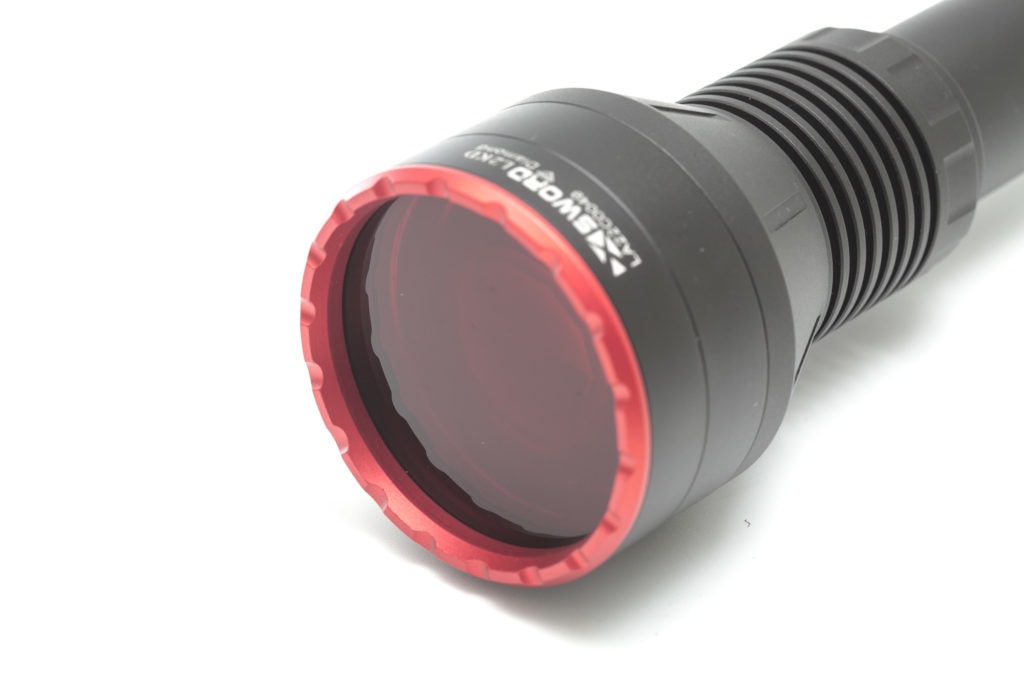
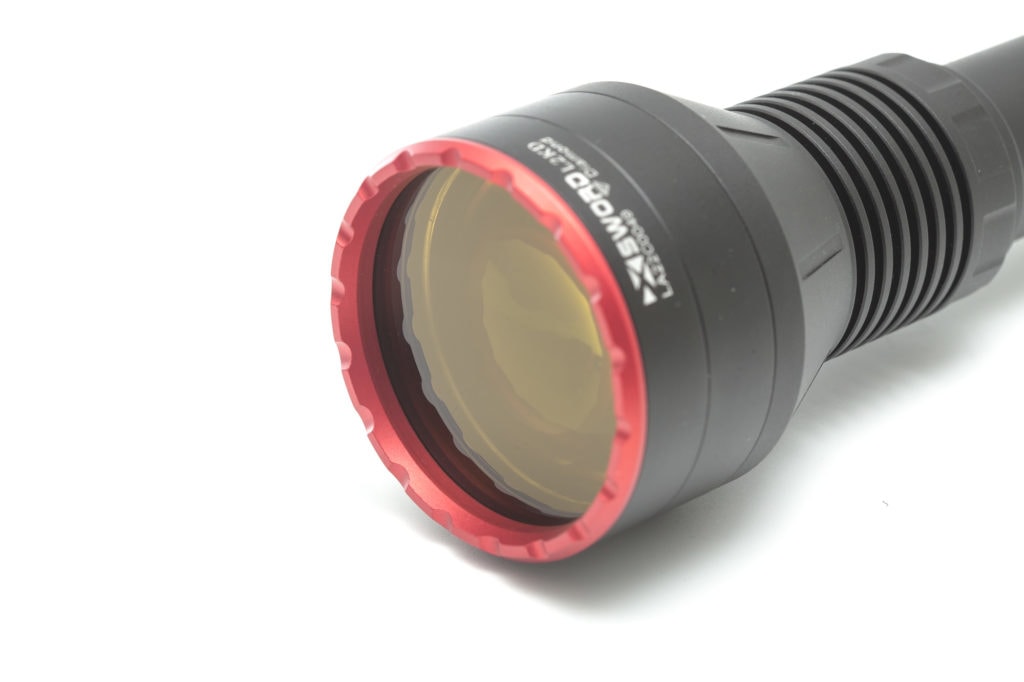
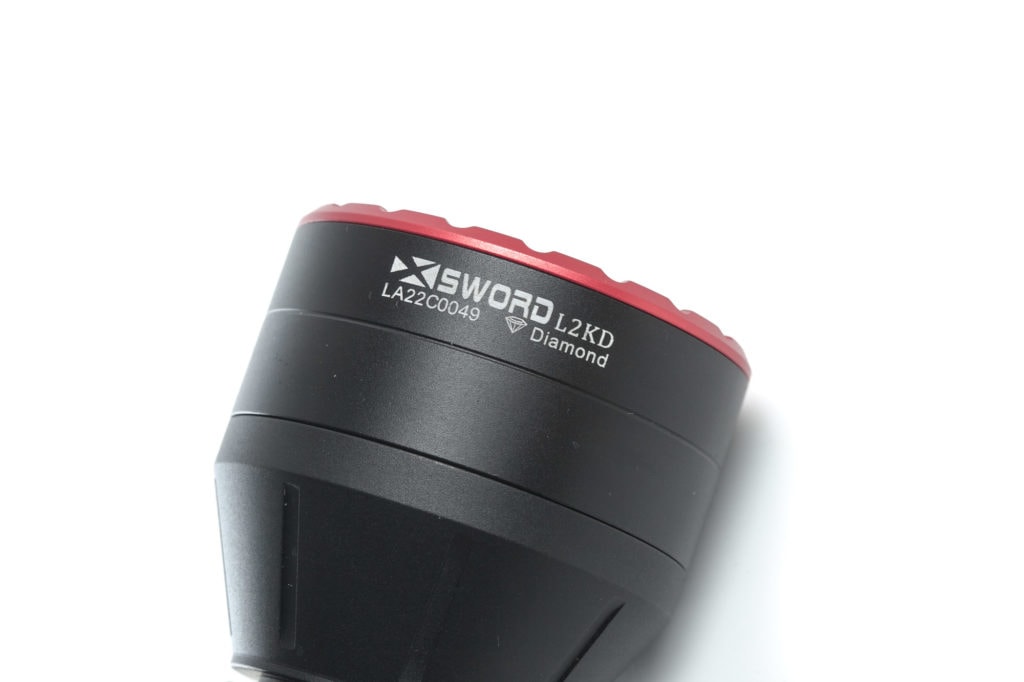
Dimensions and size comparison
Dimensions:
| Maxtoch L2Kd | Millimeters | Inches |
|---|---|---|
| Length | 250 mm | 9.84″ |
| Head diameter | 60 mm | 2.36 “ |
| Body diameter | 24.4 mm | 1 “ |
| Tailcap diameter | 30 mm | 1.18 “ |
Weight:
| Maxtoch L2Kd | Weight in grams | Weight in Oz. |
|---|---|---|
| Without battery: | 337.2 grams | 11.89 oz. |
| With 2 Maxtoch batteries | 484 grams | 17.07 oz. |
Throw Flashlight comparison
Size compared to other Maxtoch LEP flashlights
Image 1, from left to right: Maxtoch Owleyes W PRO, Maxtoch L2Kd, Maxtoch L2K, Maxtoch L3K, Maxtoch LA60
Head comparison between the L2K and L2Kd
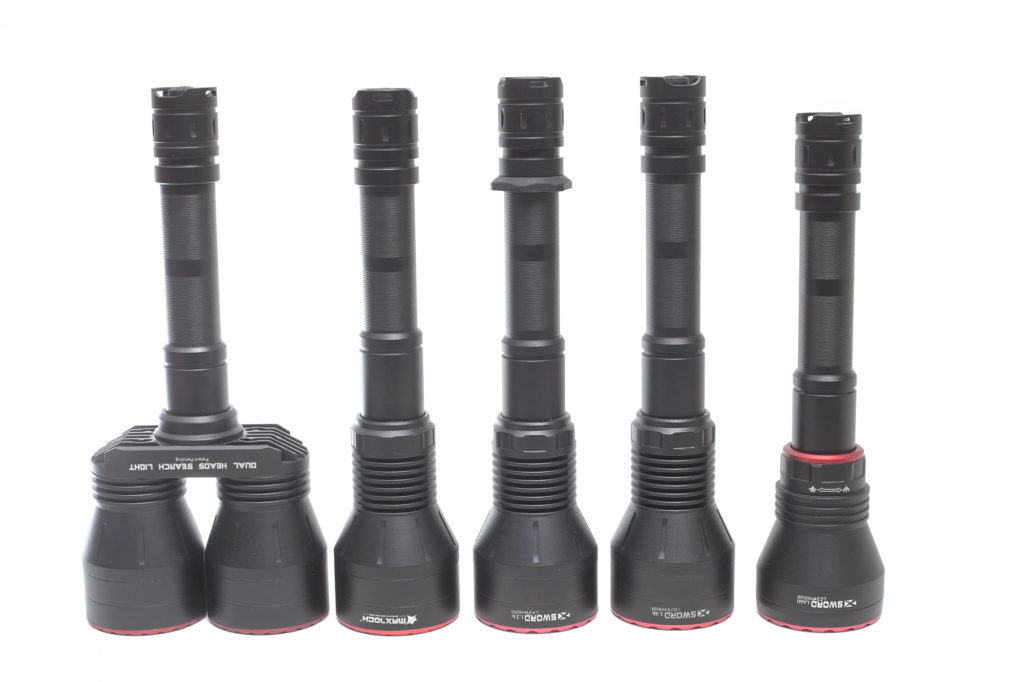
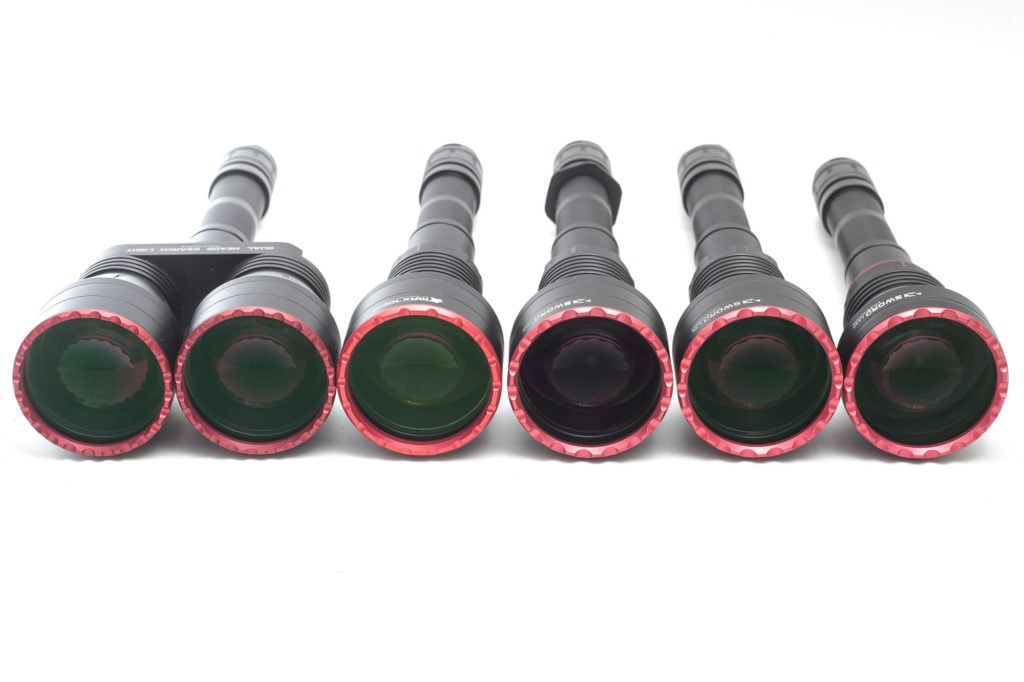
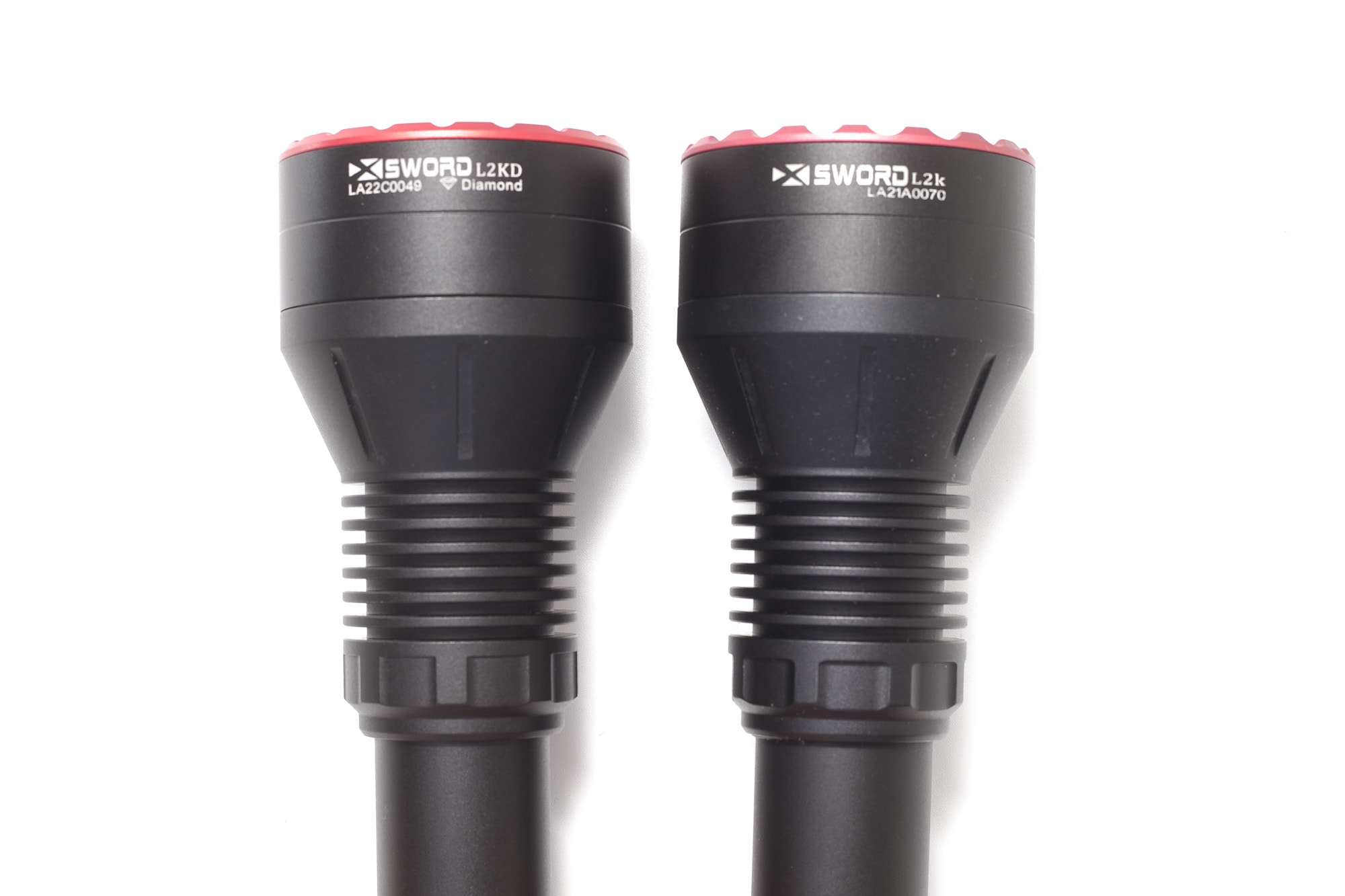
Driver & User Interface:
The L2Kd has 3 modes, High, Medium, and Low, without any blinky modes.
Available modes:
- High, Medium, Low (in that order)
From OFF:
- Half-press: momentary-on (keep tapping to change modes from High to Low)
- Single-click: to last used mode, mode memory
From ON:
- Half-press: doesn’t work
- Single-click: the flashlight turns off
Mode memory:
- Yes
Blinky modes menu:
- None
Low battery warning:
- No, but the output will decrease, which is a clear indicator that you need to replace the batteries.
Lock-out mode:
- Not necessary with just 1 mechanical switch
PWM:
- If there is any, it’s not visible by normal use.
Batteries & Charging
Mine didn’t come with the charger and batteries
But, when you order the kit, you also get a Maxtoch C2 Lithium battery charger with 2 slots. The charger has a Micro USB port, but they might have upgraded the charger since I reviewed the L2K. See for more details about the included charger and batteries, the L2K and L3K review instead.
Just keep in mind, the light will only work with shorter, button top cells, because the longer ones might be too long to screen down the tailcap. If you order the batteries along with it, you should be good to go.
Performance test
Lumen measurements:
All output numbers are relative to my homemade Integrating Sphere. It is set up with an Extech SDL400 Lux Meter for measurements including a Kenko PRO1D ND-16 filter. The base measurement is done with a Convoy S2+ that has been tested at 255 lumens.
All of my readings were taken with fully-charged Samsung 40T batteries. I also tested it with the Maxtoch batteries, and they were very close.
| Mode | Specs | turn on | 30 sec | 10 min |
|---|---|---|---|---|
| Low | 100 lm | 174 lm | 171 lm | 166 lm |
| Med | 300 lm | 354 lm | 348 lm | 333 lm |
| High | 650 lm | 563 lm | 548 lm | 515 lm |
Low and Medium mode performed much better than specs, but High mode performed quite a bit below spec.
Parasitic drain:
- It has a mechanical switch, so there shouldn’t be any parasitic drain from the driver.
Runtime: Battery life
The runtime test was done with the 50cm integrating sphere, including the Kenko Pro1D ND-16 filter and Extech SDL400 data logging Lux Meter.
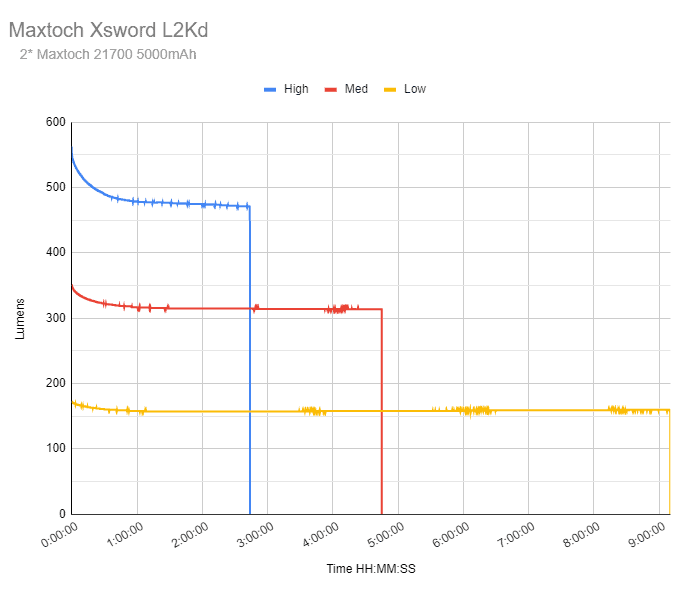
| Mode | Specified | Measured runtime (ANSI FL1) | Time till shut off |
|---|---|---|---|
| Low | 9h 10min | 9h 10min | 9h 10min |
| Med | 4h 40min | 4h 45min | 4h 45min |
| High | 2h 40min | 2h 43min | 2h 43min |
ANSI FL1 standards: The runtime is measured until the light drops to 10% of its initial output (30 seconds after turning on). This does not mean that the flashlight is not usable anymore. The last column shows how long the light actually works till it shuts off. If there is a + symbol, it means that the test was stopped at that particular point, but the light was actually still running. This happens on certain occasions, with certain drivers, firmware, or batteries.
Throw Measurement: Peak beam intensity and beam distance
Measurements were taken outdoors at 20 meters with a Hagner E4-X Lux Meter. I recorded the measurements 30 seconds after turn on with 2 sets of Samsung 40T batteries. I then also retested it at 30 meters to reconfirm the measurements.
| Mode | Specs | Candela measured | in Meters | in Yards | i Miles |
|---|---|---|---|---|---|
| Low | – | 1,052,000 | 2051 | 2243 | 1.27 |
| Med | – | 2,036,000 | 2854 | 3121 | 1.77 |
| High | 3200 meters | 3,020,000 | 3476 | 3801 | 2.16 |
| High 30 meters | – | 3,042,000 | 3488 | 3815 | 2.17 |
| High 30 meters | – | 3,051,000 cd | 3493 meters | 3820 yards | 2.17 miles |
The difference between the 2 measurements at 30 meters was only 1 lux.. This is a great flashlight to show the difference between a 1 Mcd, 2Mcd, and 3Mcd beam.
Extra info: Peak beam distance according to ANSI FL1 standards: The calculated value of distance in meters at which the flashlight produce a light intensity of 0.25 lux. (0.25 lux is about the brightness of a full moon shining on an object).
BEST LEP Flashlights comparison
A list of all the best LEP flashlights we reviewed, including multiple cell setups: These numbers are NOT from the specifications but measured by our reviewers. They include all types of LEP flashlights reaching 2,000,000 cd or more. The numbers include the measurement in lumens (lm), measured candela (cd), and calculated distance in meters and yards. These numbers are all measured 30 seconds after turning on.
Discontinued flashlights will be removed from this list.
| Flashlight | Battery | @30sec (lm) | Candela (cd) | Meters | Yards |
|---|---|---|---|---|---|
| Astrolux WP3 | 21700 | 445 | 2,412,000 | 3106 | 3397 |
| Maxtoch Owleyes W PRO v2 | 3*21700 | 1028 | 4,000,000 | 4000 | 4374 |
| Maxtoch LA60 | 2*21700 | 456 | 2,272,000 | 3015 | 3297 |
| Maxtoch L2K | 2*21700 | 445 | 2,508,000 | 3167 | 3464 |
| Maxtoch L2KD | 2*21700 | 548 | 3,051,000 | 3493 | 3820 |
| Maxtoch L2KS | 21700 | 442 | 2,308,000 | 3038 | 3323 |
| Weltool W4 | 21700 | 450 | 2,184,000 | 2956 | 3232 |
| Weltool W4 Pro | 21700 | 550 | 2,808,000 | 3351 | 3665 |
| Weltool W5 pro | 2*22430 | 981 | 2,284,000 | 3023 | 3306 |
Interactive graphs (hover your mouse over these graphs for more data)
Hover your mouse over the interactive graph below to see the details of each specific light. (tip: hold your mobile phone horizontally to see the whole graph). Or visit this link to open a new window for the interactive graph.
The same graph, but then zoomed in. Or check this link to open this interactive graph in a new window.
And here’s an overview with another comparison graph to show the distances and candelas measured at 30 seconds.
Beamshots
For the following beamshots I used a Canon EOS 5D Mk2 and a 100mm lens. manual settings: ISO1600, .5sec , F4, 5000K
The tower is about 450 meters / 492 yards away.
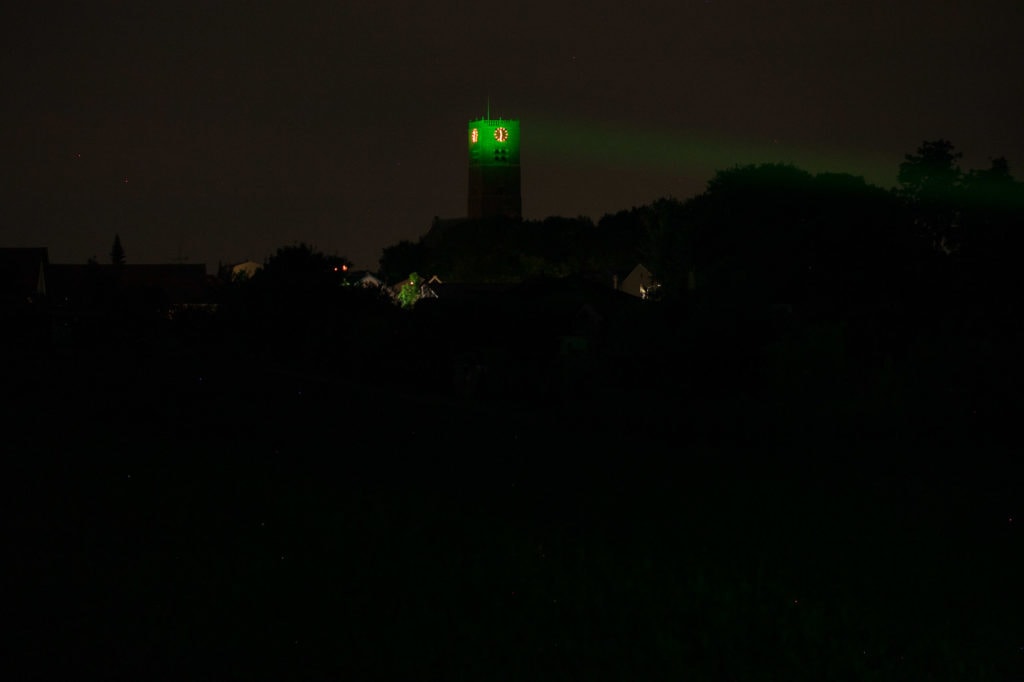
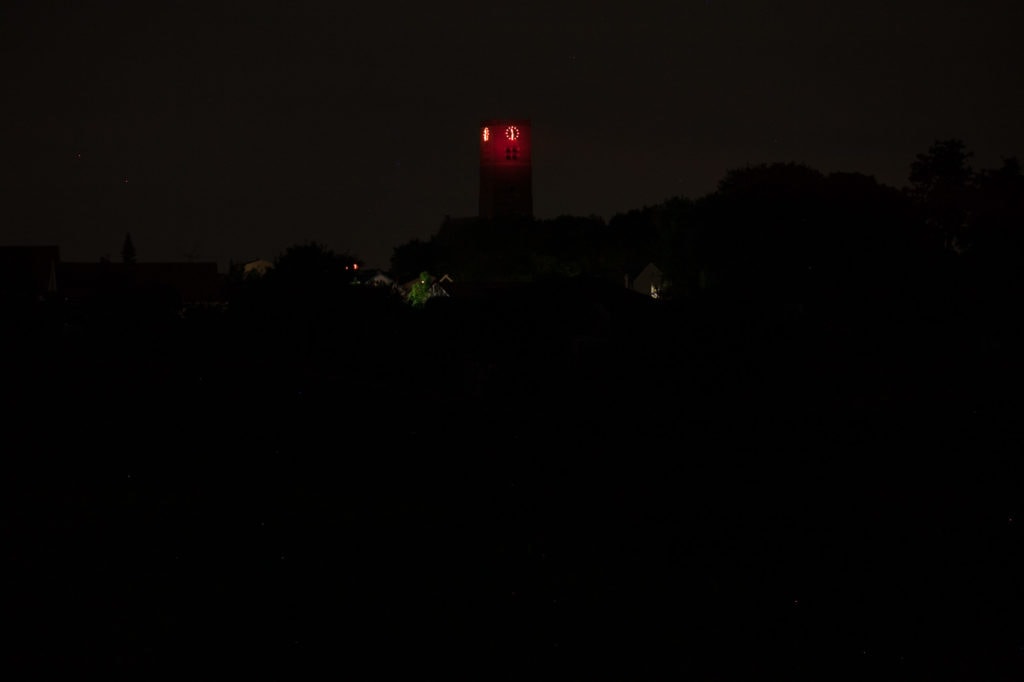
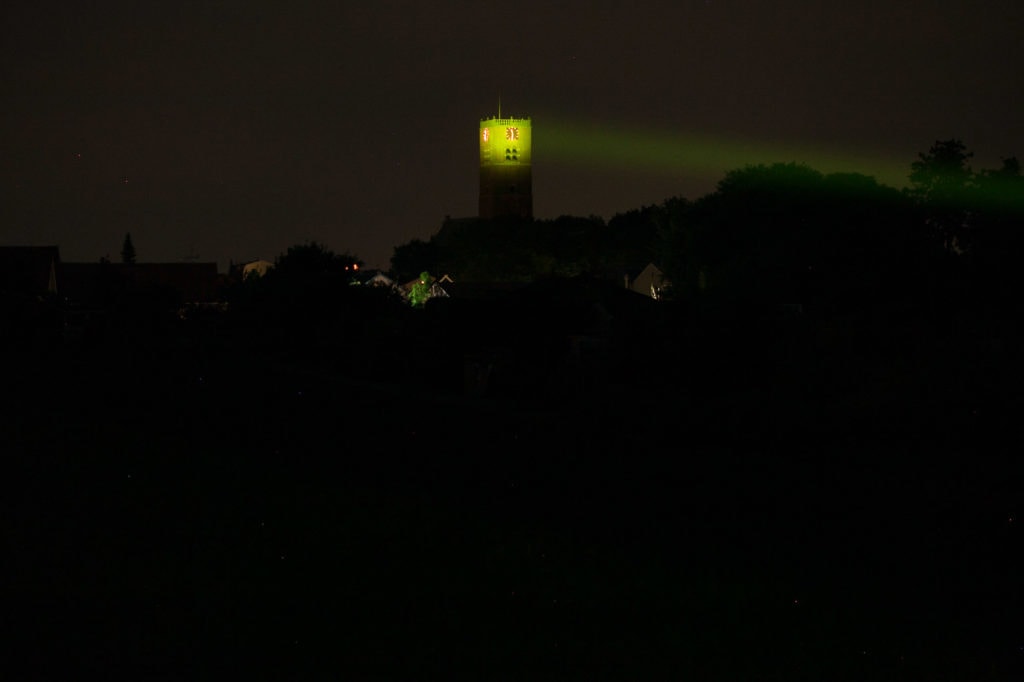
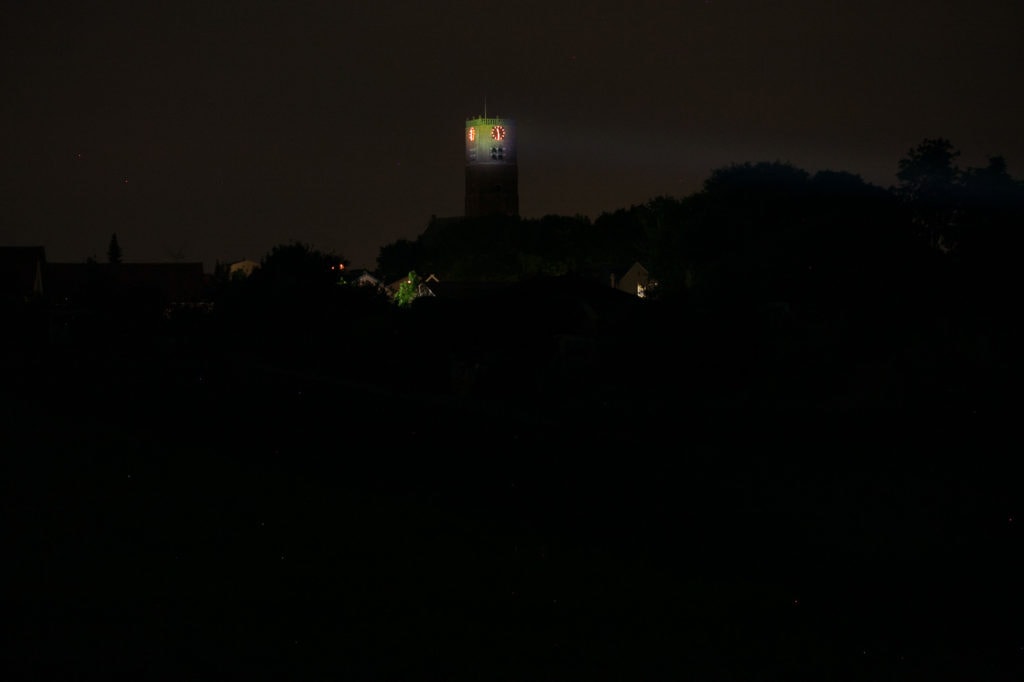
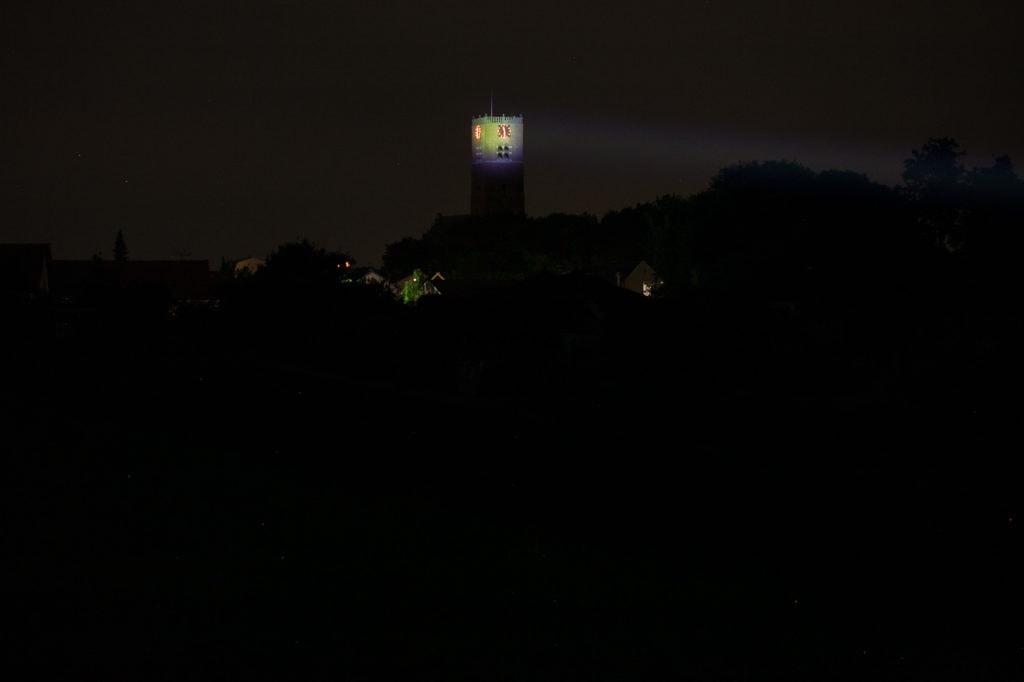
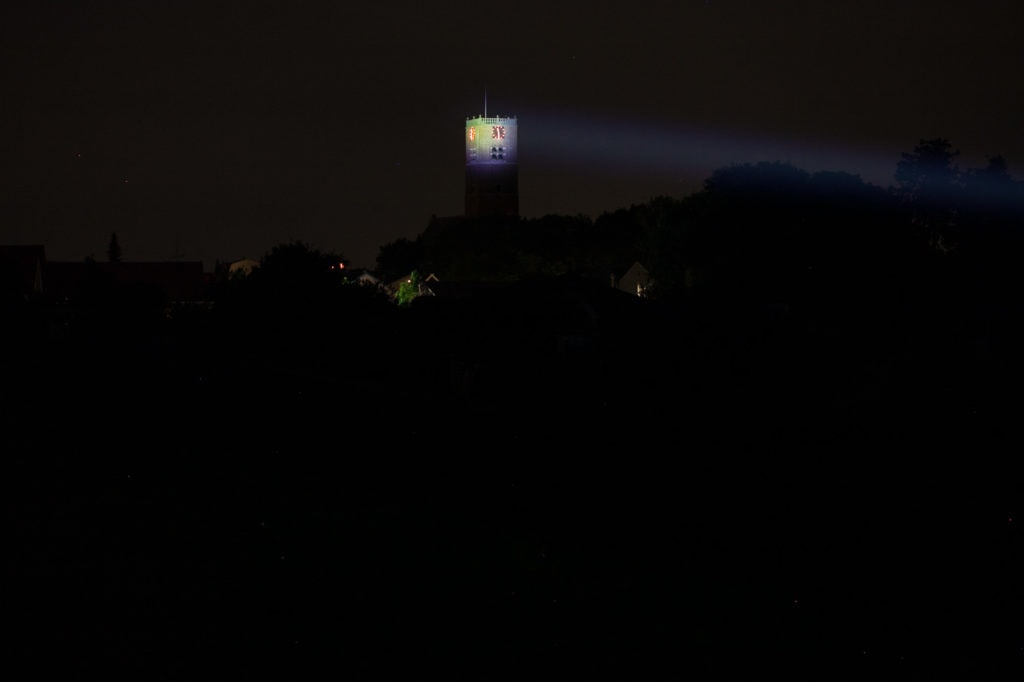
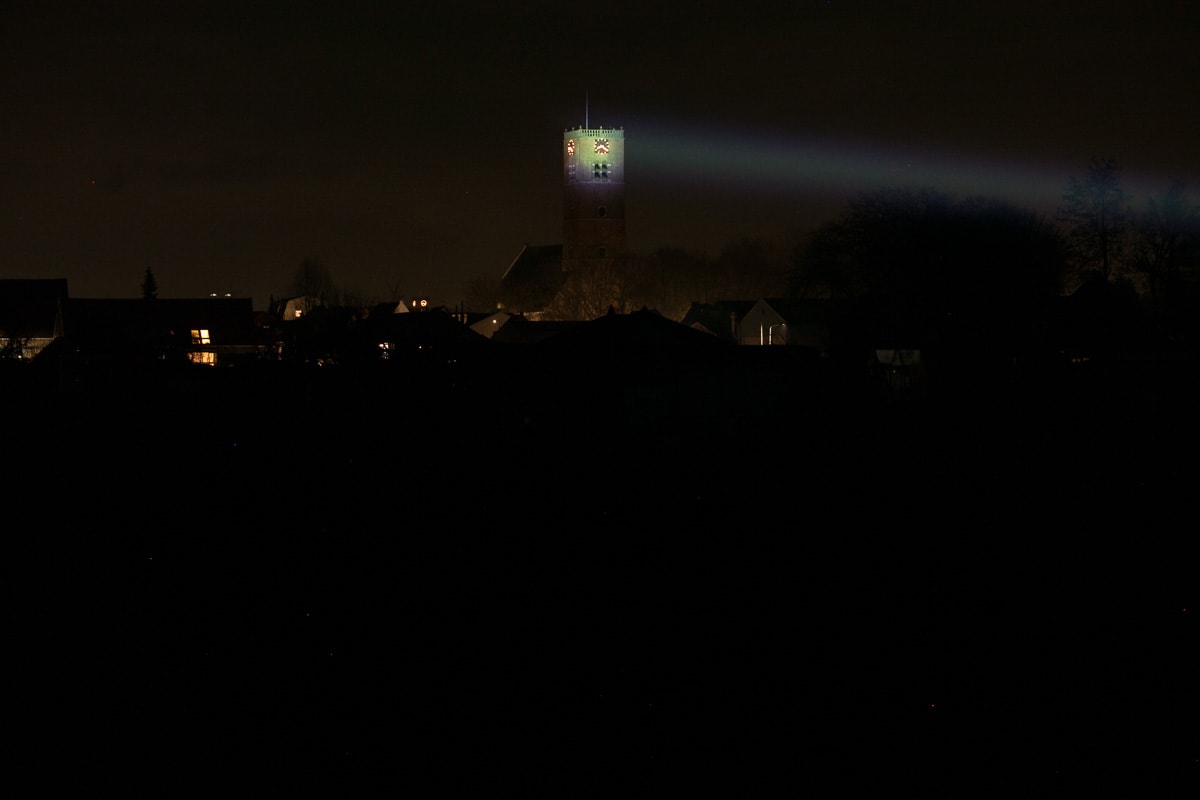
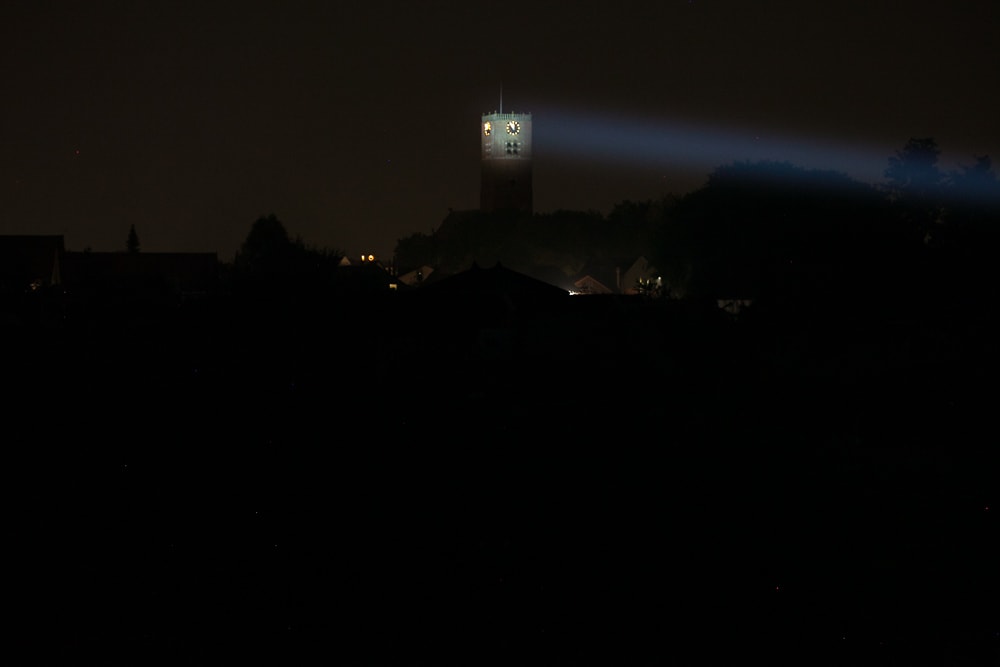
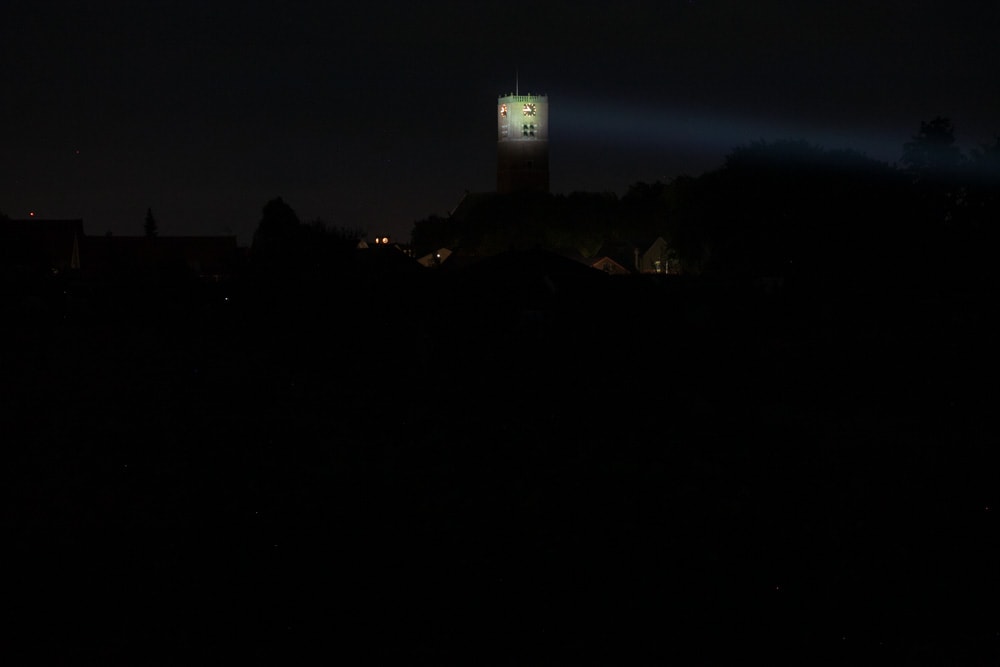
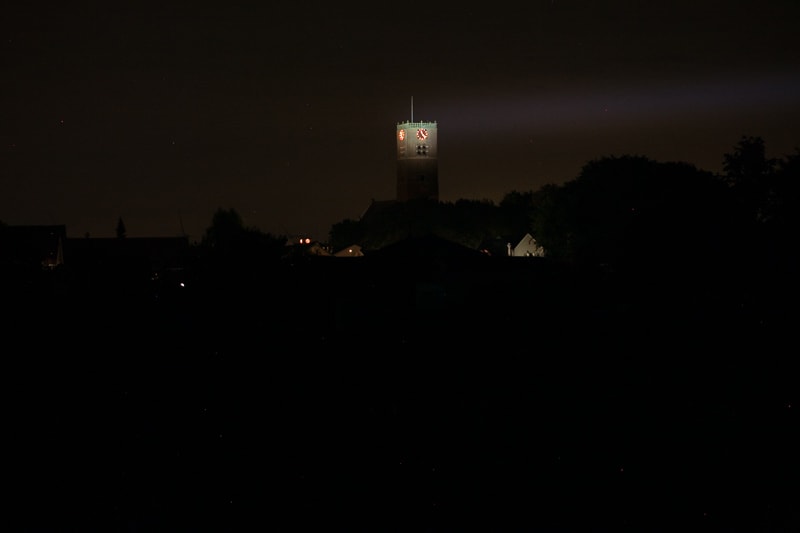
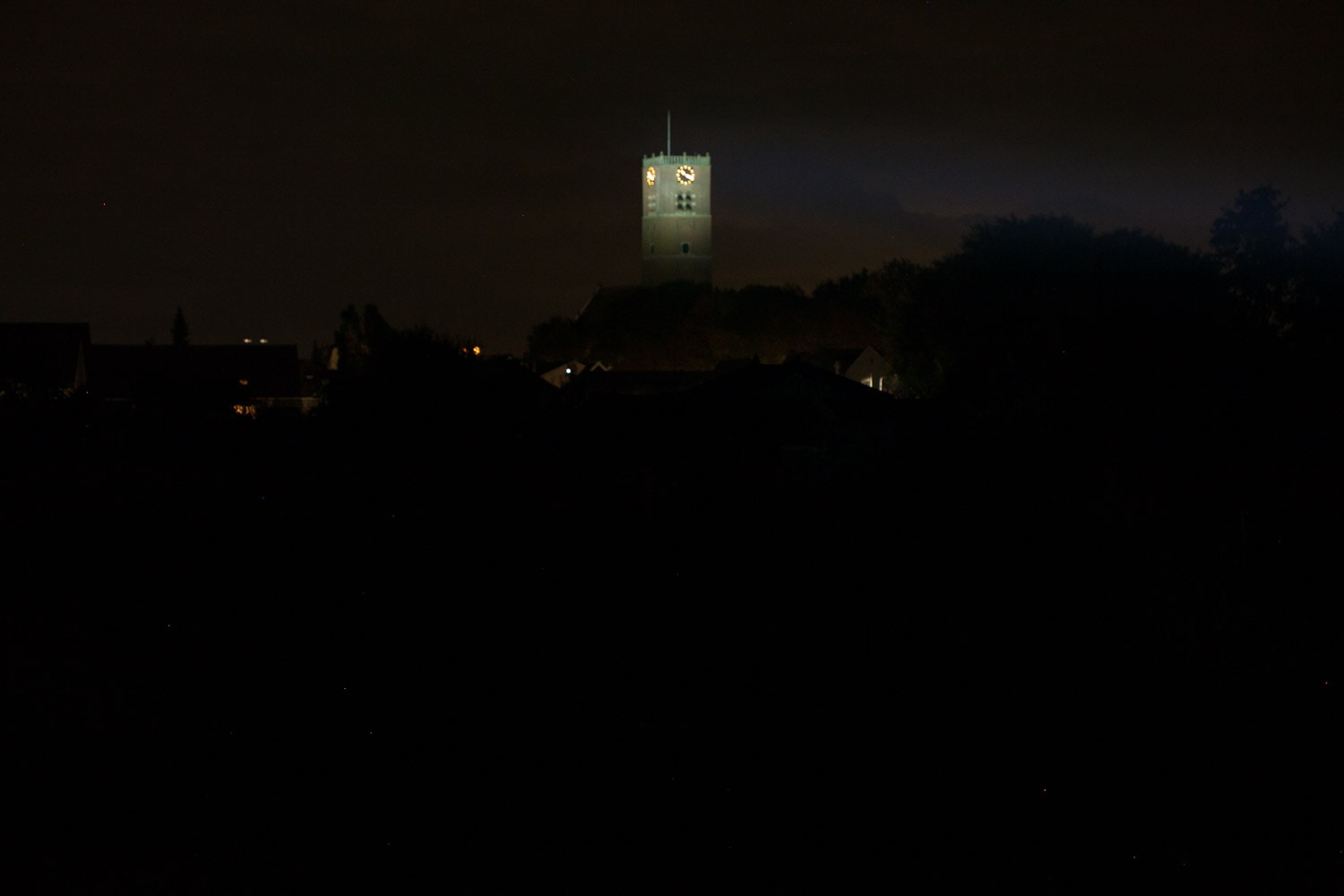
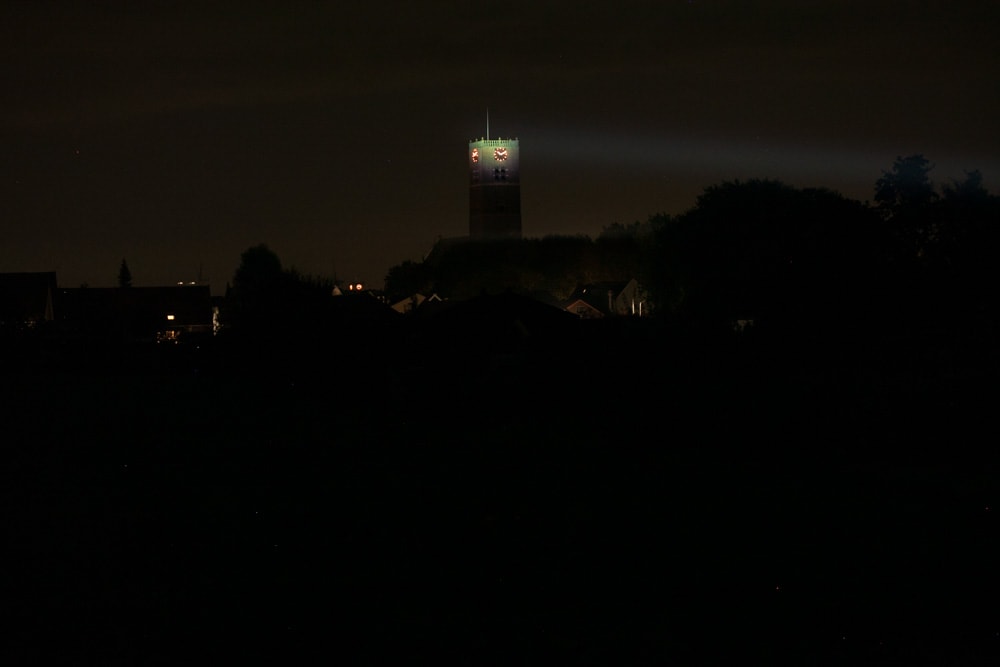
Disclaimer: This flashlight was sent to me for review at no cost by Maxtoch. I have not been paid to review, nor have I been holding back on problems or defects.
Final Verdict
Pros
- Reaching over 2 miles / 3kilometers
- Plenty bright for an LEP
- Modes are spaces at 1 Mcd, 2Mcd, and 3Mcd
- Performs better than specs
Cons
- Not as good-looking as some of its competitors
- The red filter reduces the visibility a lot (not very useful)
Explanation on star ratings:
1: Avoid: my phone flashlight would be a better choice – 2: Poor: significant defect or issues; almost unusable – 3: Average: some defects or issues; but still usable 4: Good: recommended (minor issues) – 5: Great: highly recommended

5 stars: ★★★★★
I have to admit that it’s not the prettiest flashlight out there, but it surely is one of the best flashlight throwers on planet earth. It beats all the other single-cell and double-cell flashlights. Except for it’s bigger dual-head Owleyes W PRO. But that’s a totally different beast.
The L2Kd is a nice improvement over the dual-cell L2K, L3K, and LA60, with a new and improved LEP module, but with the same simple UI.
If you have held off to find an LEP doing over 2 miles, 3 kilometers, or 3 million candela… wait no longer: The L2Kd is what you are looking for.
Maxtoch L2Kd discount code
Get $40 off with the following code: 2KDIAMOND
1lumen selects and reviews products personally. We may earn affiliate commissions through our links, which help support our testing.